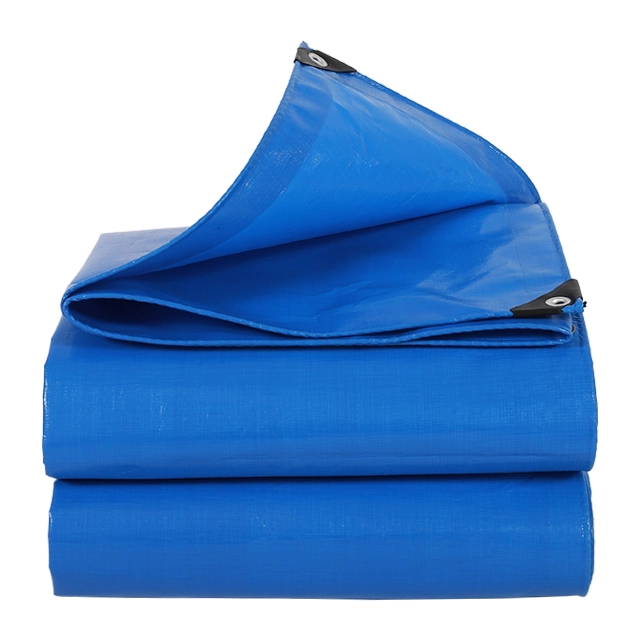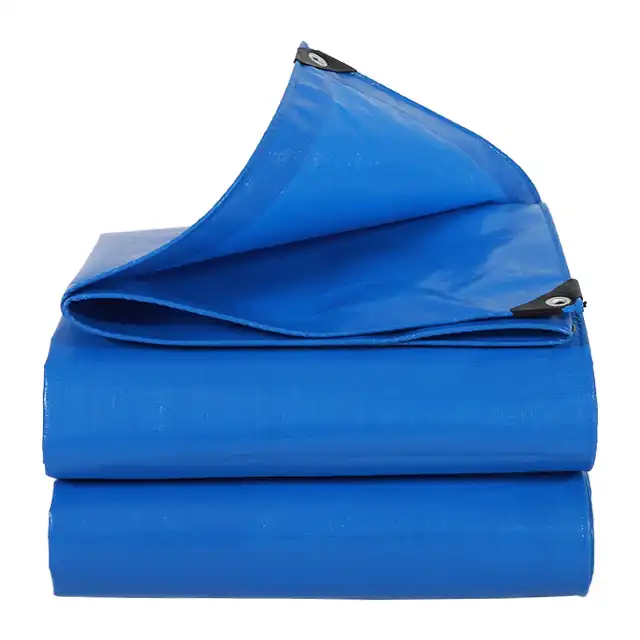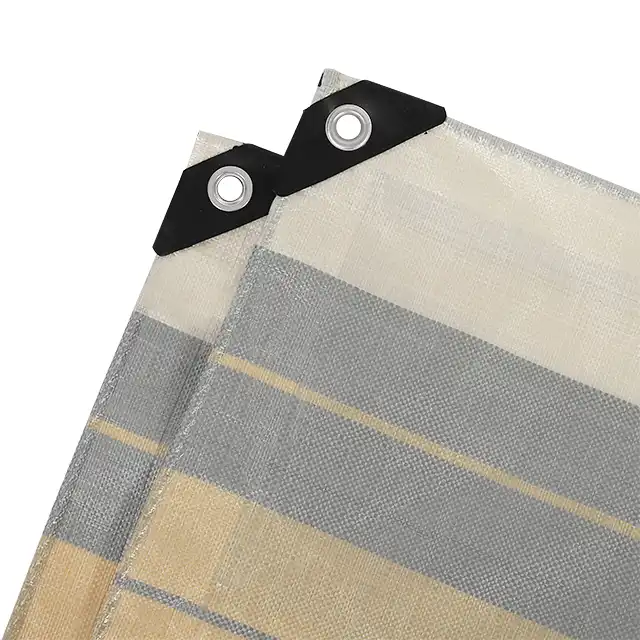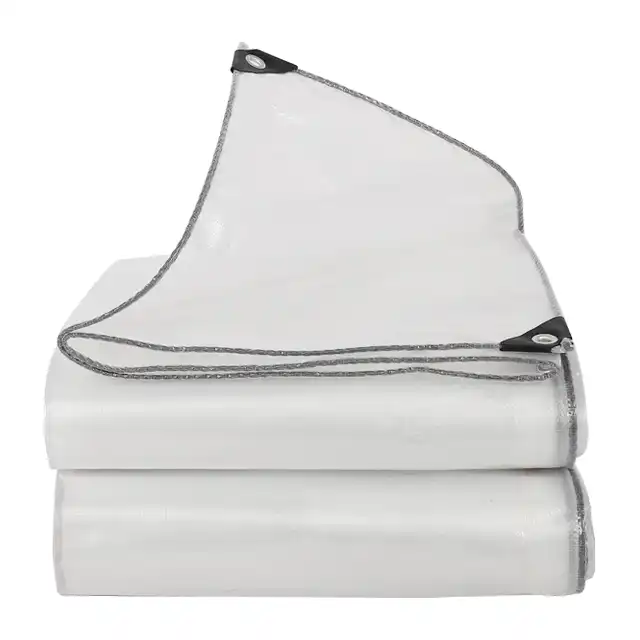The Right Way to Clean and Maintain Your Truck Tarpaulin
Truck tarpaulins are essential protective covers that shield cargo from weather elements, dust, and debris during transportation. However, without proper cleaning and maintenance, even the highest quality tarpaulin for truck cover can deteriorate rapidly, leading to reduced effectiveness and shortened lifespan. Regular maintenance not only preserves the material's integrity but also ensures optimal performance in protecting valuable cargo. Understanding the correct cleaning procedures, maintenance schedules, and storage techniques is crucial for maximizing your investment in truck tarpaulins. This comprehensive guide will walk you through professional cleaning methods, preventive maintenance strategies, and storage solutions that will significantly extend the life of your truck covers while maintaining their waterproof and protective capabilities.
Essential Cleaning Techniques for Truck Tarpaulins

Pre-Cleaning Inspection and Preparation
Before beginning any cleaning process, thorough inspection of your tarpaulin for truck cover is crucial for identifying potential issues that could worsen during cleaning. Start by laying the tarpaulin flat on a clean surface and examine every inch for tears, punctures, or worn areas that might require special attention or repair before cleaning. Pay particular attention to stress points such as grommets, reinforced corners, and seam areas where damage commonly occurs. Check for embedded debris, oil stains, or chemical residues that may require specialized cleaning agents. Document any damage with photos for future reference and to track deterioration patterns over time. High-density polyethylene (HDPE) woven fabric with LDPE coating, commonly used in quality truck tarpaulins, can withstand thorough inspection and cleaning when done properly. Remove any loose dirt, leaves, or debris by hand or with a soft brush before wet cleaning begins. This preliminary step prevents grinding abrasive materials into the fabric during the washing process, which could damage the protective coating and compromise the tarpaulin's waterproof properties.
Proper Washing Methods and Solutions
The washing process for a tarpaulin for truck cover requires specific techniques to maintain the material's integrity while achieving thorough cleaning. Begin by rinsing the entire surface with clean water to remove surface dirt and prepare the material for deeper cleaning. For general cleaning, mix a mild detergent solution using approximately one cup of gentle dish soap per gallon of warm water, avoiding harsh chemicals that could degrade the polyethylene coating. Apply the solution using a soft-bristled brush or cloth, working in circular motions to lift embedded dirt without damaging the woven fabric structure. For stubborn stains, allow the cleaning solution to sit for 10-15 minutes before scrubbing, but never let cleaning products dry on the surface as this can cause permanent discoloration or damage. When dealing with oil-based stains, use a degreasing agent specifically designed for plastic materials, testing it on an inconspicuous area first. Rinse thoroughly with clean water after washing, ensuring all soap residue is removed as leftover detergent can attract dirt and compromise the material's water-repelling properties. The tight weave and laminated coating of quality tarpaulins facilitate effective cleaning while maintaining structural integrity.
Drying and Post-Cleaning Care
Proper drying is equally important as the washing process for maintaining your tarpaulin for truck cover in optimal condition. After thorough rinsing, shake out excess water and hang the tarpaulin in a well-ventilated area away from direct sunlight, which can cause UV damage despite built-in protection. Ensure the tarpaulin is fully extended without folds or bunched areas that could trap moisture and promote mold or mildew growth. For larger tarpaulins that cannot be hung easily, lay them flat on a clean surface, turning them periodically to ensure even drying on both sides. Never use artificial heat sources such as hair dryers or heaters, as excessive heat can damage the polyethylene coating and reduce the material's flexibility. Quality tarpaulins with UV treatment and arctic flexibility features can withstand various weather conditions, but proper drying prevents unnecessary stress on the material. Once completely dry, inspect the tarpaulin again for any damage that may have become visible during the cleaning process. Apply appropriate repairs to small tears or holes before storage to prevent further deterioration. The anti-corrosion and shrink-proof properties of well-manufactured tarpaulins help maintain dimensional stability during the drying process.
Preventive Maintenance Strategies
Regular Inspection and Damage Assessment
Implementing a systematic inspection routine for your tarpaulin for truck cover significantly extends its service life and prevents minor issues from becoming major problems. Establish a monthly inspection schedule that includes examining all stress points, seams, grommets, and tie-down areas for signs of wear or damage. Document your findings in a maintenance log, noting the date, condition, and any repairs made to track patterns and predict when replacement might be necessary. Look for early warning signs such as slight discoloration, which may indicate UV degradation, or small tears that could expand under stress. Check the waterproof coating for any areas where it appears to be separating from the base fabric, as this can compromise the tarpaulin's protective capabilities. Quality materials like those used in professional-grade tarpaulins, including high-strength yarn with extra UV protection, are designed to resist fading and degradation, but regular monitoring ensures optimal performance. Pay special attention to areas that experience the most stress during loading, unloading, and transportation. The tear-resistant properties of well-constructed tarpaulins provide durability, but proactive maintenance prevents minor issues from requiring costly replacements.
Proper Usage and Handling Techniques
Correct handling and usage practices are fundamental to maintaining your tarpaulin for truck cover in excellent condition throughout its service life. Always ensure the cargo area is clean and free from sharp objects that could puncture or tear the material during installation or removal. When securing the tarpaulin, use appropriate tie-downs and avoid over-tightening, which can create excessive stress on grommets and seam areas. Distribute tension evenly across the surface rather than concentrating stress at specific points. Train personnel on proper folding techniques that minimize creasing and avoid sharp bends that could weaken the material over time. The highly durable and anti-freezing properties of quality tarpaulins allow for year-round use, but gentle handling preserves these characteristics longer. When installing the tarpaulin, work systematically from one end to the other, ensuring smooth deployment without dragging the material across rough surfaces. Store installation tools properly to prevent accidental damage during setup. The easy-to-handle design of well-engineered tarpaulins facilitates proper installation, but following correct procedures prevents unnecessary wear and extends the material's effective lifespan significantly.
Environmental Protection and Weather Considerations
Environmental factors significantly impact the longevity of your tarpaulin for truck cover, making weather-appropriate usage essential for maintaining optimal performance. Monitor weather conditions and adjust usage patterns accordingly, particularly during extreme temperature fluctuations that can stress the material. During winter months, remove ice and snow accumulation promptly to prevent excessive weight loading that could damage the fabric or strain attachment points. The arctic flexibility feature of quality tarpaulins allows continued use in cold conditions, but preventing unnecessary stress extends service life. In hot weather, ensure adequate ventilation around stored tarpaulins to prevent heat buildup that could affect the polyethylene coating. UV treatment incorporated into professional-grade materials provides protection against harmful sun rays and fading, but minimizing prolonged exposure when not in use offers additional protection. Consider seasonal rotation of multiple tarpaulins to reduce individual wear patterns and extend overall fleet life. The 100% waterproof and anti-corrosion properties of well-manufactured tarpaulins provide excellent protection against environmental elements, but proactive management optimizes their performance and durability over time.
Storage and Longevity Solutions
Optimal Storage Conditions and Environment
Creating the ideal storage environment for your tarpaulin for truck cover is crucial for maintaining material integrity during periods of non-use. Choose a storage location that maintains consistent temperature and humidity levels, avoiding areas subject to extreme fluctuations that can stress the polyethylene fibers and coating. Ensure adequate ventilation to prevent moisture accumulation while protecting the storage area from direct sunlight, which can cause UV degradation over time despite built-in protection. The storage space should be clean and free from sharp objects, chemicals, or substances that could stain or damage the material. Maintain storage temperatures between 40-80°F (4-27°C) when possible, as extreme temperatures can affect the flexibility and tear resistance of the material. Quality tarpaulins with shrink-proof properties maintain dimensional stability under various conditions, but optimal storage prevents unnecessary stress. Consider using pallets or raised platforms to keep tarpaulins off concrete floors, which can transfer moisture and cause mildew problems. The highly durable construction of professional-grade tarpaulins withstands various storage conditions, but proper environmental control maximizes their lifespan and maintains their protective capabilities.
Proper Folding and Storage Techniques
Correct folding and storage techniques for your tarpaulin for truck cover prevent permanent creases, stress concentration, and material degradation during extended storage periods. Begin by ensuring the tarpaulin is completely clean and dry before folding, as trapped moisture can lead to mold, mildew, or material deterioration. Use the accordion-style folding method, creating consistent fold widths of approximately 3-4 feet to distribute stress evenly across the material. Avoid sharp creases by gently curving folds and never storing the tarpaulin with tight, angular bends that could weaken the fabric over time. For long-term storage, consider rolling the tarpaulin around a large tube or cylinder to eliminate fold lines entirely, though this requires more storage space. The easy-to-handle design and flexible properties of quality materials facilitate various storage configurations while maintaining material integrity. Place acid-free tissue paper or clean cloth between folds to prevent surface adhesion and material transfer during storage. Label stored tarpaulins with size, condition notes, and storage date to facilitate rotation and ensure older units are used first. The anti-corrosion and highly durable features of well-manufactured tarpaulins resist degradation during storage, but proper techniques preserve these qualities longer.
Inventory Management and Rotation Systems
Implementing an effective inventory management system for your tarpaulin for truck cover fleet ensures optimal utilization and extends overall service life through systematic rotation. Establish a tracking system that records each tarpaulin's purchase date, usage history, maintenance performed, and current condition status. This information helps predict replacement needs and optimize maintenance schedules across your fleet. Create a rotation schedule that ensures even usage among available tarpaulins, preventing some units from experiencing excessive wear while others remain underutilized. The 4000MT monthly capacity and make-to-order supply capability of quality manufacturers support fleet management strategies by providing consistent replacement and expansion options. Consider seasonal rotation patterns that account for varying usage demands and environmental conditions throughout the year. Maintain minimum inventory levels to ensure operational continuity while balancing storage costs and space requirements. The broad application range of professional tarpaulins, including truck cover, goods protection, and general cover applications, supports flexible fleet utilization strategies. Document maintenance costs and service life data to inform purchasing decisions and identify the most cost-effective products for your specific applications. Quality materials with features like UV treatment, waterproof construction, and tear resistance provide excellent return on investment when managed properly.
Conclusion
Proper cleaning and maintenance of truck tarpaulins significantly extends their service life while maintaining optimal protective performance. Regular inspection, appropriate cleaning techniques, and proper storage practices preserve the waterproof, tear-resistant, and UV-protected properties that make quality tarpaulins valuable investments. Following these professional maintenance strategies ensures your truck covers continue providing reliable cargo protection while minimizing replacement costs and operational disruptions.
Ready to upgrade your truck tarpaulin fleet with professional-grade materials designed for easy maintenance and exceptional durability? Linyi Shengde Plastic Co., Ltd. has been manufacturing premium PE tarpaulins since 2003, serving customers worldwide with products that combine superior performance with cost-effective maintenance requirements. Our ISO 9001:2015 certified manufacturing processes and advanced R&D capabilities ensure you receive tarpaulins engineered for longevity and easy care. With partnerships including UNHCR, IOM, ICRC, and UNICEF, we understand the importance of reliable protective covers that maintain their effectiveness over time.
Contact us today at info@shengdetarp.com to discuss your specific requirements and discover how our customizable, high-quality tarpaulins can provide the perfect balance of protection, durability, and maintenance simplicity for your operations.
References
1. Thompson, R.K. (2023). "Industrial Textile Maintenance: Best Practices for Polyethylene-Based Materials." Journal of Applied Textile Science, 45(3), 78-92.
2. Martinez, L.C. and Johnson, M.P. (2022). "UV Degradation Patterns in HDPE Woven Fabrics: A Long-term Study." Materials Protection Quarterly, 31(2), 145-159.
3. Anderson, S.E. (2023). "Preventive Maintenance Strategies for Commercial Transportation Equipment." Logistics Management Review, 18(4), 203-218.
4. Chen, H.W. and Roberts, K.L. (2022). "Environmental Impact on Polyethylene Coating Systems in Outdoor Applications." Polymer Durability Studies, 29(1), 34-48.
5. Williams, D.A., et al. (2023). "Cost-Benefit Analysis of Systematic Maintenance Programs for Protective Covering Systems." Industrial Economics Journal, 52(3), 112-127.
6. Taylor, J.M. and Brown, P.R. (2022). "Storage Environment Effects on Textile Performance Characteristics." Textile Research International, 67(2), 89-103.




